A celebration in Italy usually involves sharing a feast with family and friends, and here Mario Matassa has put together a menu to suit any special occasion
Photos by Mario Matassa
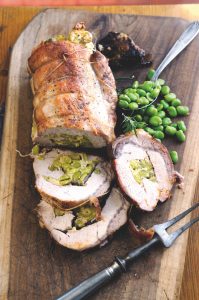
In Italy it would be unthinkable to have a celebration without food. Whether it’s a baptism, birthday party, graduation, wedding or anniversary, Christmas, New Year, Easter, a Saint’s Day, even a simple Sunday lunch, whatever the occasion, public or private, it will always entail a meal specially prepared to fit the occasion. Put simply, when Italians celebrate, they celebrate with food.
The celebrations can range from lavish private banquets to informal parties that are open to everyone, and the menu will depend on the event, the season, and the region. In Italy, it’s probably safe to say that there is a dish specifically designed to celebrate every occasion, just as there is a festival designed to celebrate every dish. And it does not end with dishes. Italians also honour ingredients through the countless summer sagre, or food festivals. In my home province alone, between June and early September sagre will be held to celebrate everything from garlic to cherries, frogs to ducks, polenta flour to potatoes, and mushrooms to chestnuts. Take into consideration the various dishes that merit food festivals over the same period – pasta and beans, polenta and cheese, tripe and onions, plus many others – and you begin to wonder how Italians find time to do anything but celebrate over the summer!
Because of regional variations, there are no hard and fast rules for a celebration menu, though a few rough generalisations can be made. To begin with, there are basic minimum guidelines. When it comes to a wedding, for example, anything less than eight courses is just not respectable. Even a standard christening, baptism or Holy Communion has a five-course starting point.
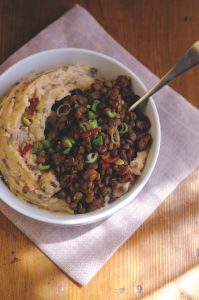
There is also a pattern as to when and how Italians celebrate. For example, Christmas Day, New Year’s Day and Easter Sunday are family celebrations. New Year’s Eve, Easter Monday and Ferragosto are when Italians book a table and venture out. If you are in Italy during any of these times, for a really good party make your way to the nearest trattoria and order the menu fisso (fixed menu).
Italy is a nation that celebrates food as much as it celebrates with food. Special occasions aside, even the casual observer can’t help but notice that food holds a special place in Italian culture. The reverence and joy with which Italians sit down to a simple bowl of pasta, for example, belies the fact that most Italians eat pasta every day of the week. To get a sense of what I’m talking about, experience the buzz the next time you visit a local trattoria. Don’t bother looking at the menu, just ask the waiter to bring you whatever the locals are having. Then all you have to do is sit back, watch, and enjoy the gusto and spirit with which Italians celebrate life and celebrate food.
Food fit for any celebration…
Pork
There is an old Italian saying: Del maiale non si scarta nulla – ‘From the pig nothing is wasted.’ Until about 50 years ago, most people in the Italian countryside would have kept pigs, valued animals whose meat would feed the family throughout the year. From salami to prosciutto, zampone and cotechino sausages to cotenne (pork rind – a speciality eaten with white beans), and ciccioli (deep-fried pork fat, eaten as an antipasto in Emilia), to chops, ribs and loins, stewing and braising joints, nothing was ever wasted! This lonza di maiale ripiena di fave e pecorino recipe is a must for special occasions.
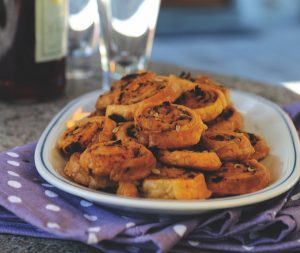 Fennel seeds
Fennel seeds
Fennel (finocchio), a very popular vegetable in Italy, is both cultivated and foraged for in the wild. It is hugely versatile as it can be eaten both cooked and raw, and it adds an unmistakable punch of aniseed flavour to any dish. Fennel seeds are mainly used in central and southern Italian cooking, but the Tuscans use the seeds to flavour their famous finocchiona salami (hence the name), and also for flavouring olives that have just been harvested. The seeds have many culinary uses, imparting their flavour to biscuits, sweet and savoury breads, especially rye breads. Used as a flavouring for meats as well as vegetables, they are said to aid digestion. A fennel tea is often given to children for this very purpose. Click here for a great recipe using fennel seeds (pictured above).
Wild foods
Italians love nothing better than foraging or growing their own food. Whether it’s picking berries from hedgerows, mushrooms and truffles from the forest, or nettles and other wild greens from the fields, wild foods are ever-present in Italian cuisine. Wild foods are never niche in the Italian kitchen but rather a celebration. They are proof that you’ve gone that extra mile and provided something unique, extra special to any occasion. Cicoria di campo are the leaves of the common dandelion plant (yes, that common weed that seems to grow everywhere!). They have a pronounced flavour which I would describe as a stronger, more rustic version of spinach. They can be eaten raw or cooked, and if you haven’t tried them before, they are delicious. Just make sure that you collect young, tender leaves from plants that have grown away from busy traffic areas. Here’s a salad recipe that uses foraged leaves to great effect.
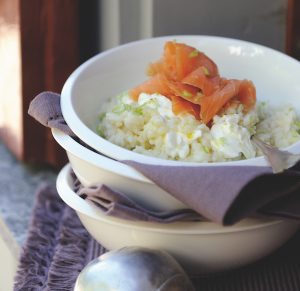 Rice
Rice
The risotto is a totally unique way of cooking rice. This method of cooking most likely originated in Lombardy and Piedmont but is now popular throughout the whole of the country. The main varieties used for risotto in Italy are Arborio, Baldo, Carnaroli, Padano, Roma and Vialone Nano. Although many people argue that Carnaroli is the best rice to use for a risotto as it is the most difficult to overcook, the truth is that the variety you use is simply a question of personal taste. Click here for a delicious risotto with smoked salmon and cream cheese (pictured left).
Lentils
An integral part of any vegan diet, lentils are highly nutritious, low in calories and, unlike many other pulses, don’t need soaking before use. They are a widely used ingredient in Italy and are commonly eaten as a contorno (side dish) to zampone and cotechino (types of Italian sausage). They are also puréed or boiled, then topped with a drizzle of olive oil, or added to a minestrone (vegetable broth), made into a zuppa (smooth soup), or simply used to make a sauce for pasta. Many varieties of lentil can be found in the shops, but probably the most famous Italian variety is the lentil of Castelluccio di Norcia, Umbria. This particular lentil is grown within the confines of the Monte Sibillini National Park at an altitude of around 1,300 metres above sea level. It is famed for its thin skin and delicate consistency. This lentils recipe showcases their charms perfectly!
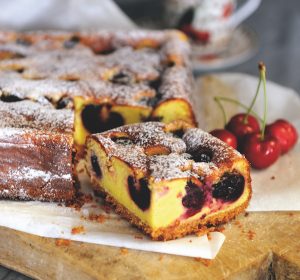 Ricotta
Ricotta
Contrary to popular belief, ricotta is not a cheese but rather a milk product. It is made all over Italy and is very widely used in cooking, being employed in both savoury and sweet dishes. It is also greatly appreciated when eaten fresh. It is made from the whey left over from the cheese-making process. Italy’s most prized ricottas are those from Lazio (ricotta genuina romana) and Sicily. Ricotta can be made from cow, sheep, buffalo and goat whey. As an ingredient, it is most popular as a stuffing for tortelli mixed with spinach or erbette (wild greens) in Emilia, or mixed with candied citrus peel or chocolate drops as the filling for the classic Sicilian cannolo. Although ricotta is generally thought of as a fresh product, aged, salted and baked ricottas are popular in southern Italy and the islands. Ricotta is the perfect addition to this Italian cheesecake with cherries (pictured above).
For more features on Italian food (and delicious recipes), check out our archive
